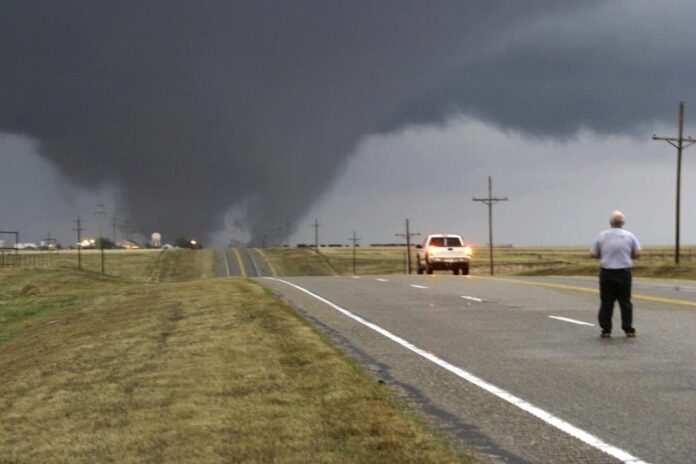(NEXSTAR) — The U.S., which has already seen over 880 reported tornadoes this year, is on track to see more than in 2024, the second-busiest tornado year on record. Wisconsin is no exception, either, with 19 already reported statewide as of mid-May – on average, the Badger State sees 23 tornadoes annually.
With peak tornado season still on the horizon for many, it’s a good time to revisit storm safety.
If you live where tornadoes are common, you likely already know where to safely ride out a storm: experts recommend a basement, an interior room on the lowest level of the building, a tornado shelter, or, if those are unavailable, “the nearest ditch, ravine, or culvert.”
But what about when you’re driving, and aren’t near any buildings to hide in?
Your first instinct may be to seek out a bridge or overpass to park under. While that may be effective if, say, you’re caught in a hailstorm, experts warn against it amidst a possible tornado for several reasons.
Parking there can block traffic, potentially putting yourself and others at risk of collision. You may also be struck by flying debris, and the bridge could fail.
That’s minor compared to the even more serious situation that could occur.
As meteorologist Aaron Brackett of Nexstar’s KFOR previously explained, when winds encounter an overpass, they increase.
“So even if you have a wind in a weaker tornado of 100, 150 miles per hour, you can add 40, 50, 60 miles per hour to that just from being underneath the underpass. So, it’s actually making the tornado you’re in worse,” he said.
Think of the overpass like a tube. To pass the same amount of air through the narrow space while maintaining its mass, the winds have to speed up as they travel under the overpass. This is known as the Bernoulli effect.
Several people encountered this in May 1999. They had taken cover under an overpass during the deadly F5 Bridge Creek-Moore Tornado in Moore, Oklahoma, where wind speeds reached over 300 miles per hour, the highest ever recorded.
Among those was Stuart Earnest, who told KFOR in 2012 that when the tornado hit, “people started getting sucked out from under the bridge.”
He recounted coming down the embankment to help the injured, first encountering a man whose wife had been killed in the tornado. Her body was found days later. Other survivors suffered horrific injuries, according to the National Weather Service.
Instead of parking beneath an overpass, experts recommend exiting the highway to find more suitable shelter. Should you find yourself stuck in traffic, NOAA says you may need to park your car safely, get out, and find a sturdy building for shelter.
If there is no structure, the agency recommends laying “flat in a low spot, as far from the road as possible (to avoid flying vehicles).” If the tornado begins to impact your car and you’re unable to escape, experts say to keep your seatbelt on and get as low as possible away from windows and the windshield.
You cannot outrun a tornado in your vehicle, NOAA notes. You can, however, try to get out of its path: if it’s moving to your right, you should go left, and vice versa.
Nonetheless, the best advice is to get off the road and try to find a building.
Rick Smith, the warning coordination meteorologist at the National Weather Service’s forecast office in Norman, Oklahoma, told The Associated Press that when it comes to sheltering in ditches, under overpasses, or inside a car, “people have survived doing all of those, people have died doing all of those.”
When hiding in a building, Smith says to put as many walls and barriers between you and the outside as possible. You can also use mattresses, couch cushions, or other sturdy items to protect yourself from deadly flying or falling debris. Bicycle or sports helmets can provide crucial head protection.
Don’t open windows and doors to “equalize the pressure.” NOAA notes doing so is “absolutely useless, a waste of precious time, and can be very dangerous.” Research has shown that closing your home’s garage door and all interior doors could ease the high winds inside somewhat by compartmentalizing them.
About 1,200 tornadoes strike the U.S. every year.
The Associated Press contributed to this report.
